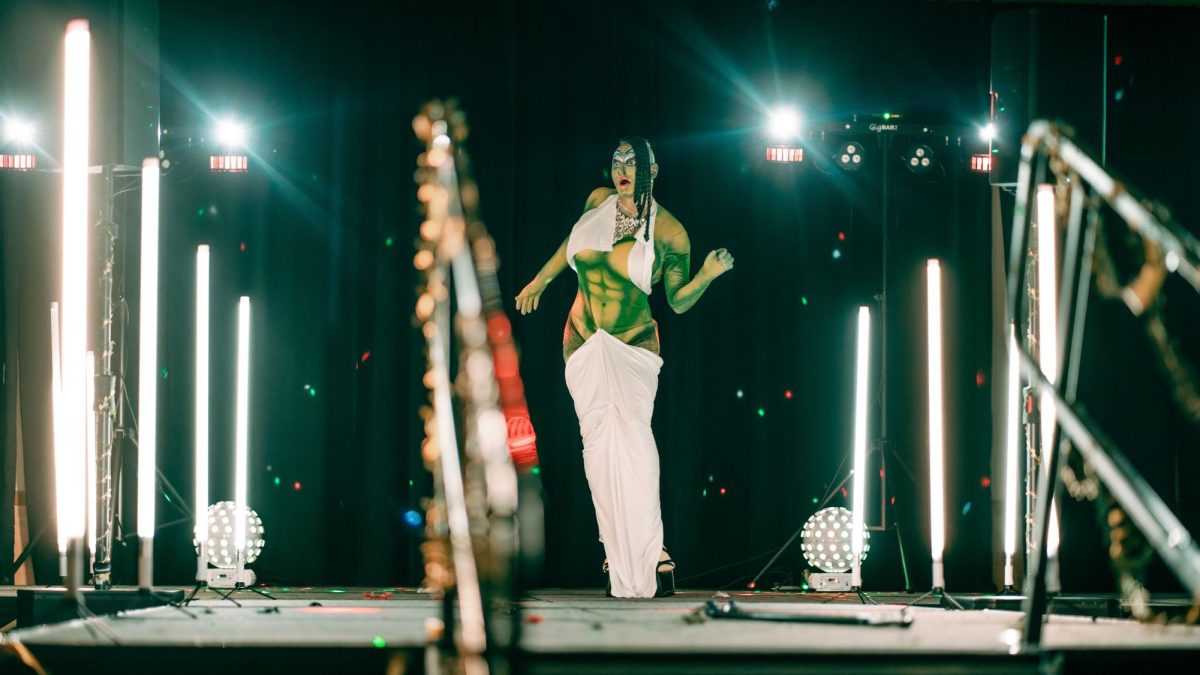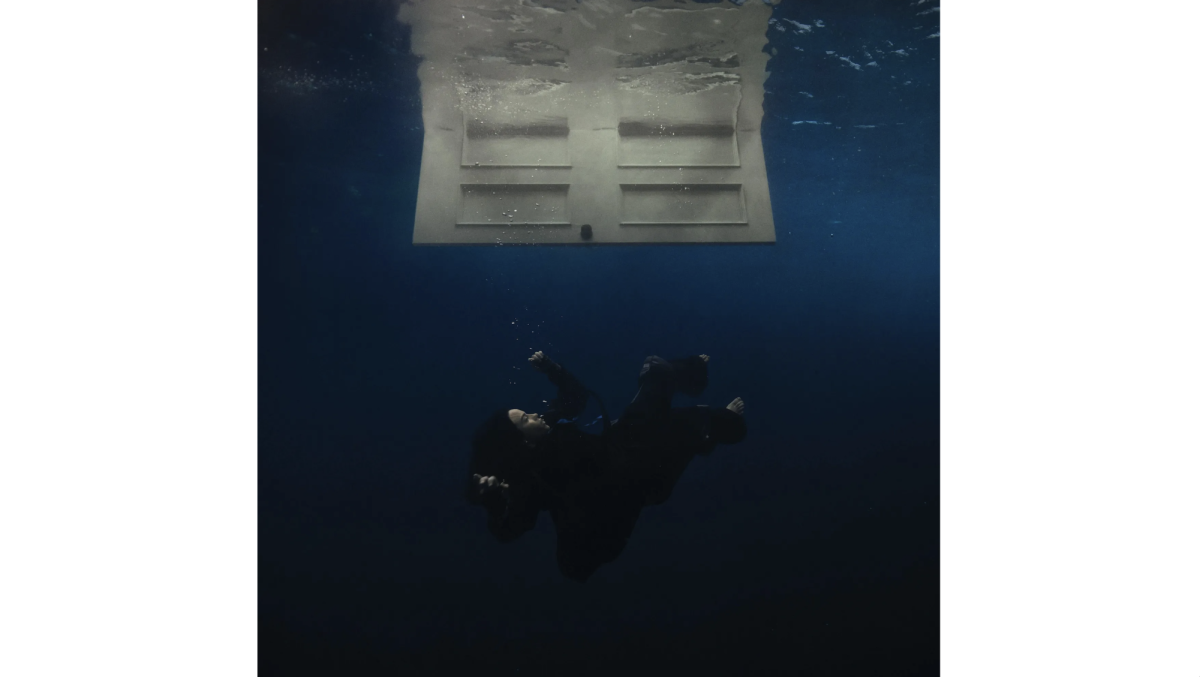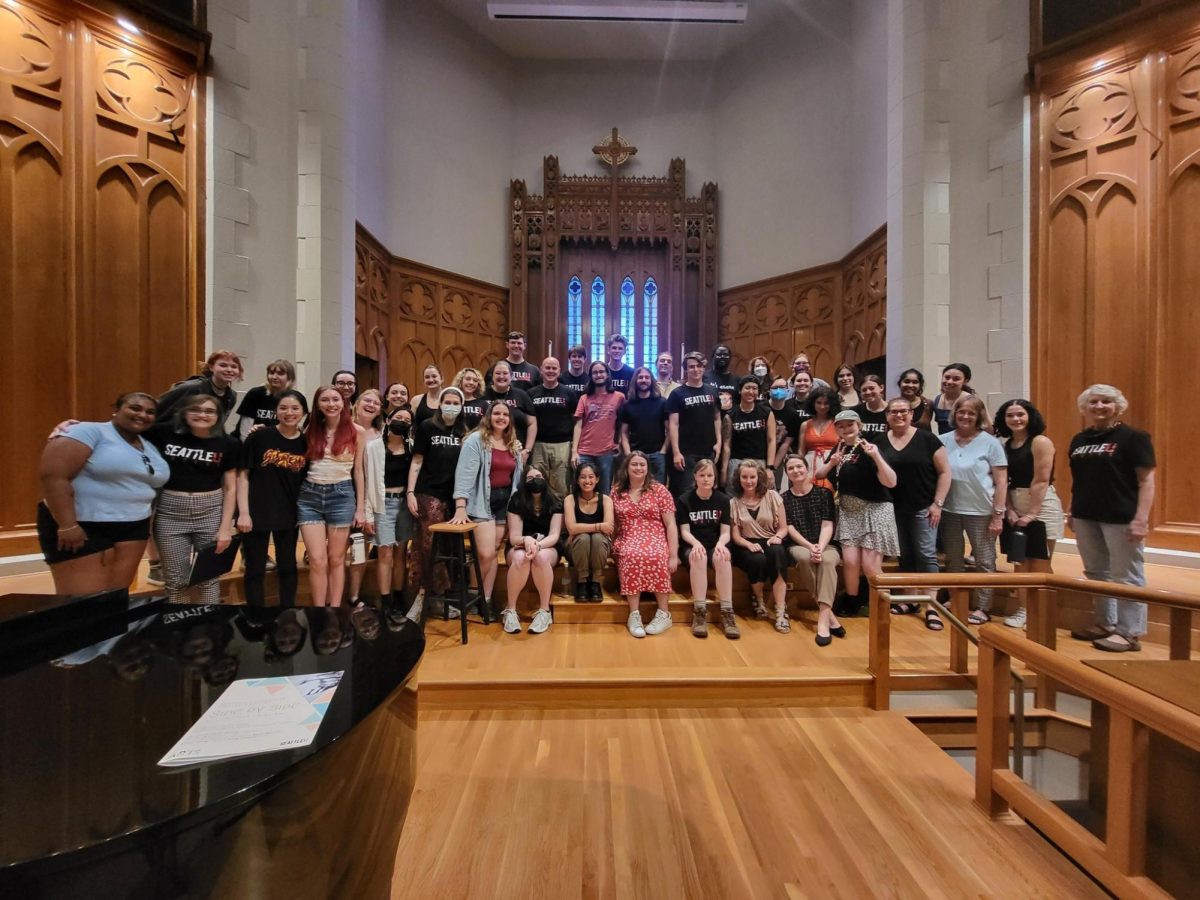Famous mime aris. Shawn Wen appeared at The Elliot Bay Book Company on Tuesday, Jan. 16, to discuss one such ephemeral art form. Radio producer and artist, Wen discussed her biographical poetry book called A Twenty Minute Silence Followed By Applause about the famous mime artist Marcel Marceau.
This project was not initially intended to be a book, as it originated with a grant Wen received to interview mime artists and make audio recordings of their shows. Wen said these recordings consisted of “creaking chairs and bursts of laughter.” As time went on, she shifted her focus to watching videos of Marceau performing and found these to be much more inspiring for her project.
“He was didactic and self-mythologizing and sarcastic and sad. He brought more complexity to the piece than any of the interviews did,” Wen said.
From there, it slowly grew into the first piece of writing Wen has done of any significant length.
Surrounded by bookshelves, Wen was situated on a small stage with her boyfriend Klaus, who participated in the reading with her by speaking Marceau’s dialogue. Throughout the reading, a projector displayed a stream of graphic animation that abstractly followed the themes of her words.
Wen’s lyric essay covers an array of aspects of Marceau’s life, from his father’s death in Auschwitz to his status as a general in Napoleon’s army to his many failed marriages.
“Marcel Marceau’s first wife divorced him in 1958. She said he would not speak to her for days on end. She called it mental cruelty. He called it rehearsal,” Wen read from her book.
Her book recounted a few of his love affairs, none of which had happy endings. However, Marceau stayed committed to his passion throughout his life, regardless of the destruction it consequently brought to his love life.
At one point, Wen quoted Marceau’s opinions of love with one simple question that he once asked: “Does not pantomime offer the language of the heart?”
Wen’s longtime friend Liang attended the event and shared her perspective on misunderstood artforms.
“I do my best to appreciate other art forms. I try to think ‘What work went into this?’ When I don’t understand art, I try to break it down and see the value in it,” Liang said.
Wen also discussed how Marceau was rumored to be deaf and mute, a mistaken combination often assumed about people with either disability. To dispel the rumors, he would occasionally appear on talk shows where he spoke English nearly flawlessly. He simply didn’t enjoy it very much as his most powerful form of communication was with his body.
“Our muscles cannot call upon so deep a vocabulary,” Wen said in reference to Marceau’s skill.
Wen discussed how Marceau is the complete embodiment of mime as an art form since he, with his character Bip the Clown, created the immortalized image of a French man with a painted white face.
“There is something so sad and powerful that he was synonymous with the form, so successful, but at the same time he created this cliché,” Wen said.
This cliché became an essential aspect of the influence of mime on many forms of art to follow. Wen referenced David Bowie and Lady Gaga’s past appearances as mimes as just a few examples of Marceau’s influence on art.
“The cliché of mime is still present everywhere in theatre,” Wen’s boyfriend and co-reader Klaus said. He discussed the filmmaker Alejandro Jodorowsky, who mimed with Marceau for five years. “Fragments of Marceau are still being used.”
Michael Jackson is the artist that Marceau perhaps influenced most significantly. Wen discussed how Jackson brought Marceau onto stage to mime the song “Childhood” with him in 1995. Marceau’s famous mime routine “Walking Against the Wind” was also a pivotal inspiration for Jackson’s iconic moonwalk.
“Marceau said that Jackson had the soul of a mime. Part child, part artist, part clown, part tragic figure,” Wen said.
Beyond those important cultural influences, Wen discussed an online group called The Silent Community in which people share their passion for mime by discussing it and posting videos.
“There is yet to be someone who takes up the mantle and is famous doing so,” Wen said.
Seen through art forms such as dance, the skill and strength of bodies moving in poetic ways is a long-standing form of expression. Wen described the visceral effect of watching powerful art with this quote from her book:
“As we watch the mime’s expressive form, we lose awareness of our own. We forget to breathe. Thank God our lungs inflate and deflate on their own. This is why- at performance end- we scream, stomp our feet, and throw our hands together. And we violently reawaken to our bodies.”










